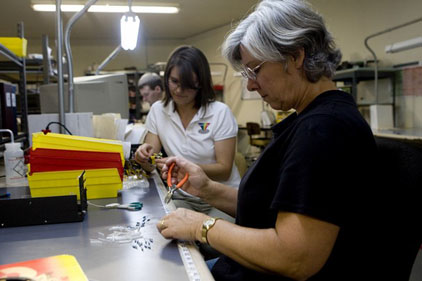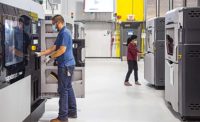Green manufacturing activity has remained steady over the past 12 months, buoyed by the rebounding economy. Manufacturers are engaged in a wide variety of sustainable initiatives, such as recycling, landfill gas and solar panels.
According to the 2011 ASSEMBLYState of the Professionsurvey, green activity is quite common in the transportation equipment industry, where 78 percent of assemblers work in plants that have implemented environmental programs.
General Motors Co. recently revamped its Orion Assembly Plant and turned it into a showcase for green manufacturing. When production of the fuel-efficient 2012 Chevrolet Sonic and Buick Verano begins this fall, 40 percent of the energy to power the facility will come from burning landfill gas created nearby.
The use of the landfill gas will save GM more than $1 million a year in energy costs, while also cutting the amount of greenhouse gases, sulfur dioxide and nitrogen oxides released in the air.
“Environmentally friendly choices often translate to higher efficiency and quality,” claims Maureen Midgley, GM executive director of global manufacturing engineering. “With these improvements, we’ll reduce greenhouse gas production by about 80,000 metric tons at a full three-shift capacity. This is equivalent to the emissions from 14,000 vehicles per year, and the electricity reduction equals at the output from 3,500 homes.”
Use of landfill gas is just one of the sustainable methods that will reduce the plant’s environmental impact. For instance, assemblers will track energy use on an hourly basis with sophisticated software, enabling them to see real-time usage by department to improve their equipment shut-down activities. In addition, recycled cardboard packaging from the Orion plant will be combined with used denim to create sound insulation for the Verano compact sedan.
Boeing Commercial Airplanes is also a key player in the green game. Its new assembly plant in North Charleston, SC, will operate as a 100 percent renewable energy site.
The plant’s roof features hundreds of thin-film solar laminate panels owned, installed and maintained by South Carolina Electric & Gas. It will provide up to 2.6 megawatts of electrical power for the site-enough to power approximately 250 homes.
“The installation will be the largest in the Southeast by production capacity and the sixth largest in the United States,” claims Mary Armstrong, vice president of environment, health and safety at Boeing. “This partnership . . . shows that it is possible to commit to renewable energy on a large scale.”
Assemblers in the electrical equipment and appliance industry (66 percent) and fabricated metal products (50 percent) industries are also actively engaged in green programs. Machinery manufacturers (26 percent) are less likely to pursue green initiatives.
Large manufacturers (companies with 1,000 or more employees) tend to be more involved with green programs. For example, 74 percent of assemblers in that category claim they have implemented sustainability programs during the last 12 months. On the other hand, only 41 percent of small manufacturers (companies with fewer than 100 employees) have gone green.
Green Manufacturing Goes Mainstream


